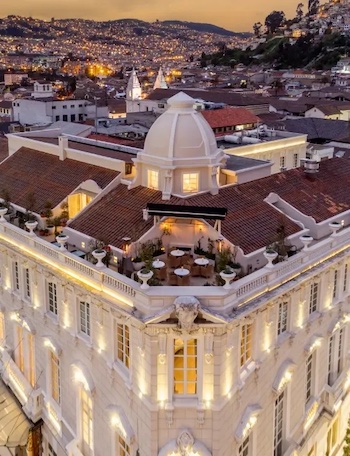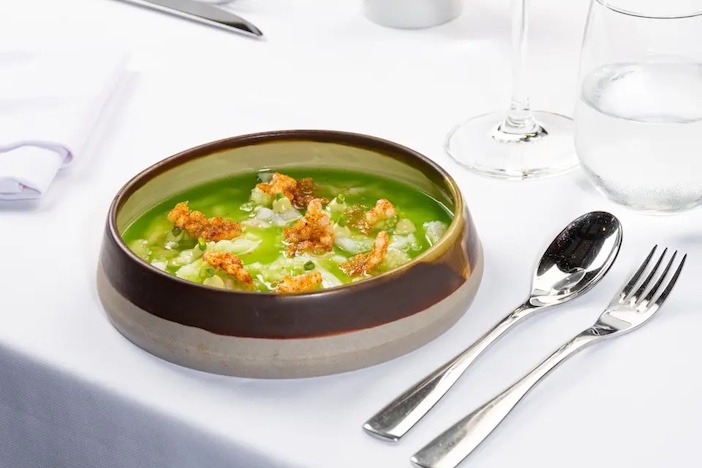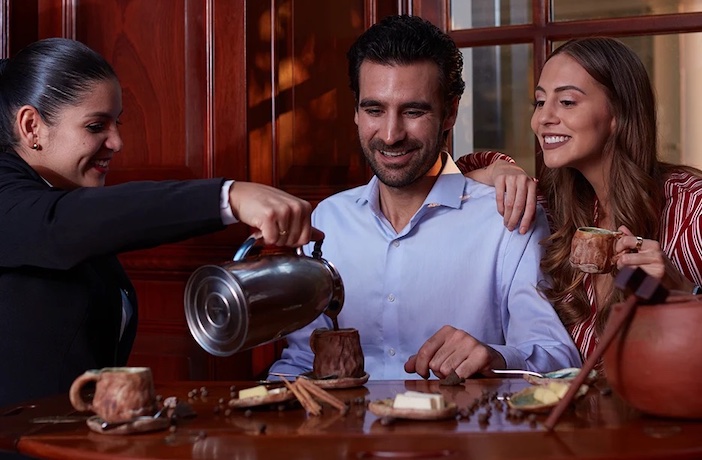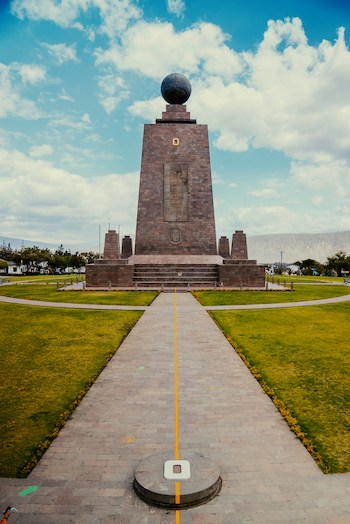The old town of Quito is, in its entirety, a UNESCO World Heritage Site and, right in the heart of it on the corner of the vast Plaza de San Francisco sits the Casa Gangotena, once a family mansion, now a boutique hotel. The only Relais & Chateaux hotel in Ecuador’s capital, it’s an oasis of calm from its vast reception space filled with roses (one of Ecuador’s most important exports, on Valentine’s Day 26,500 tons of them leave the country) to its cool glass-roofed loggia to its delightful enclosed garden.
 It is not, though, the first building on this site. In 1600, the Ponce Castillejo family built the first mansion and that was bought later some decades later by a Basque Spaniard, Martin Gangotena, a name that would weave its way through the history of Quito for the following centuries.
It is not, though, the first building on this site. In 1600, the Ponce Castillejo family built the first mansion and that was bought later some decades later by a Basque Spaniard, Martin Gangotena, a name that would weave its way through the history of Quito for the following centuries.
It all changed in 1914 when the house was burned to the ground (reputedly by a rejected suitor of one of the Gangotena daughters) but some elements of the original building were salvaged and the family brought in the Russo brothers, to rebuild it in a style that combined Art Deco and Art Nouveau.
You can spot this in the flowing stained glass decorations of the windows and the beautiful spiral staircase in the centre of the hotel. The earlier mansion, though, still makes its presence felt – there’s a lovely marble fireplace, glorious mirrors and, most surprisingly, tin ceilings, brought from Belgium and regarded as the height of fashion at the time.
It is now the most comfortable and relaxing of hotels with vast bedrooms overlooking the square, a rooftop bar with splendid original cocktails, and a fine dining restaurant that introduces traditional Ecuadorian flavours with European flair and presentation. These are a delight to explore. I, for one, would never have thought of putting peanuts in Manabita (a kind of fish soup) or pairing meat dishes with coffee or chocolate – these were all quite delicious. (They make a particularly wonderful ceviche, too.)

Being right in the centre of the Plaza San Francisco, you’re also right next to the magnificent Basilica and Convent of San Francisco, comprising 13 cloisters, three churches, a plaza, 3,500 works of religious art, a library with thousands of books, a school and, at one time, a brewery. There is so much gold and silver leaf in the main church you need dark glasses. All around there are tiny streets with extraordinary goods and services on offer.
There are chocolatiers (Ecuador’s chocolate is regarded as the best in the world); Panama hat makers (Ecuadorians took the hats with them when they went to build the Panama Canal); artisans who mend religious statues but also do a spot of plastic surgery on the side, healing wounds with a secret recipe of pigments and earth; and local herbalists who are sixth-generation shamans and sell huge bunches of herbs alongside a curtained cubicle where you can have a limpia (cleansing) and an amulet to ward off the evil eye.

The hotel will arrange for a limpia in the comfort of your room and the shaman arrives armed with herbs to cleanse you – starting with nettles (ouch) and going on to more pleasant mint, oils and, of course, roses. They can also arrange a visit of the Basilica with one of the monks, a visit to a master chocolate maker (chocolate is another of Ecuador’s most important exports) or a tour of the neighbourhood with a local so you get to be a Quiteño for a day.

Mitad del Mundo monument (Photo by Evan Wise, courtesy of Unsplash)
Most importantly, they will also organise a trip to the Mitad del Mundo (or Middle of the World). There is a monumental globe and museum on the original site and a line where you can stand with one foot either side of the (French) equator. Down the road at the real Equator is Intiñan (it means “path of the sun”) where there is a rather different museum featuring local crafts, traditional indigenous huts and a display of shrunken heads. They also have quite wonderful demonstrations to explain the science of the Equator.
There is, for instance, a simple sink with a bucket beneath into which you pour water: less than a metre either side of the line, the water circles in opposite directions. On the line itself, it simply goes straight down. You also discover, due to the reduced gravity at the Equator, that it is almost impossible to balance an egg (though I’m not sure how easy that is elsewhere). There is one other surprising benefit of the lower gravity at the Equator: it means you weigh less. This is not something to get too excited about, however, as it’s only 1% of your body weight. So, if you weigh 200 pounds normally, at the Equator you’ll weight 198.
Now where was that delicious dish of ceviche again?
Latin Routes (0208 546 6222; Latinroutes.co.uk) offers a 7-day itinerary to Ecuador from £3,199 per person based on two people sharing. The price includes 4 -nights at Casa Gangotena in Quito with a private city tour, Middle of the World visit and local life experience. All transfers and return international flights from London are included. For more information about Casa Gangotena, please visit www.casagangotena.com.
Header photo: Rooftops, Quito old town, by Kiyoshi (courtesy of Unsplash)




